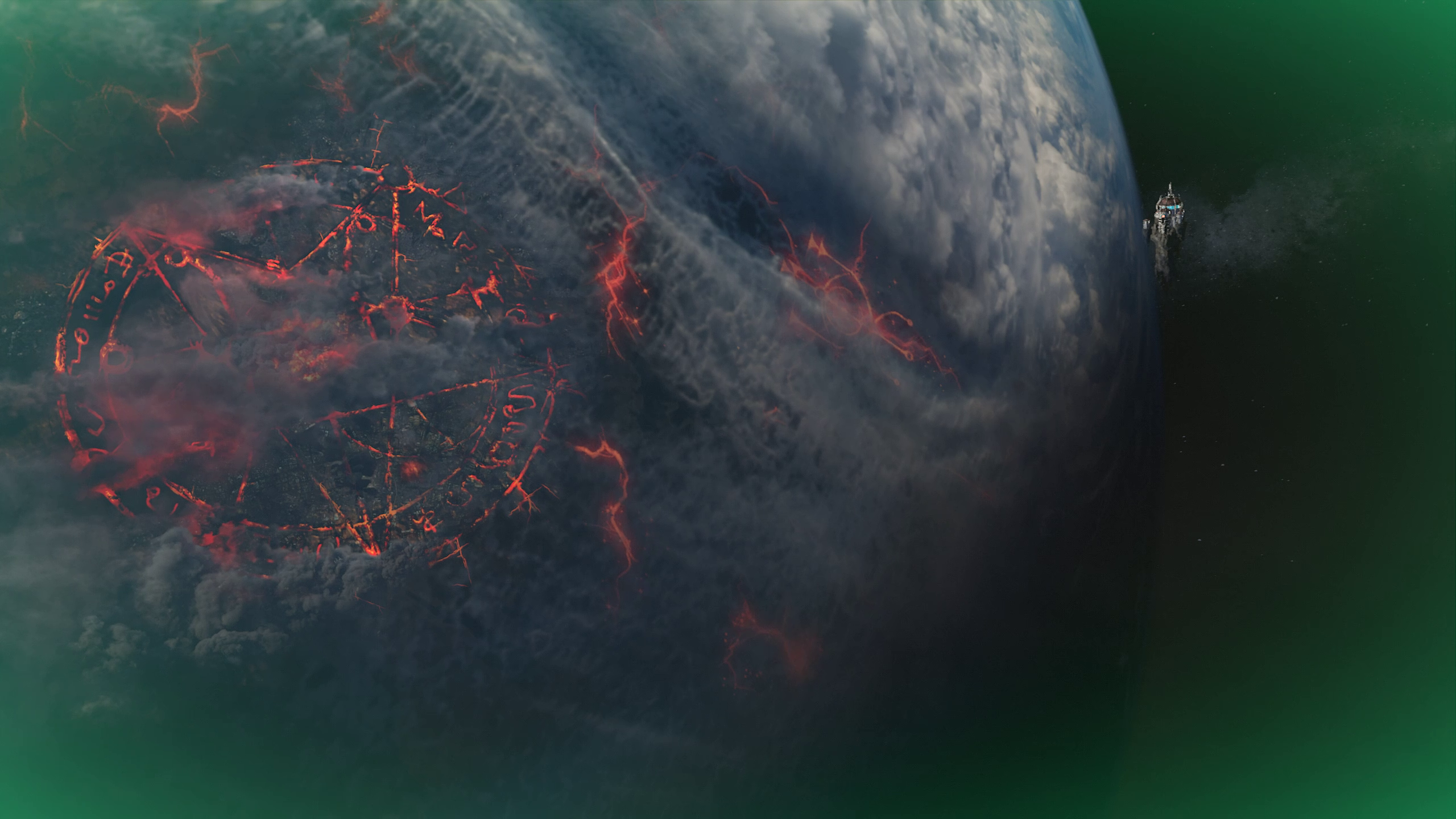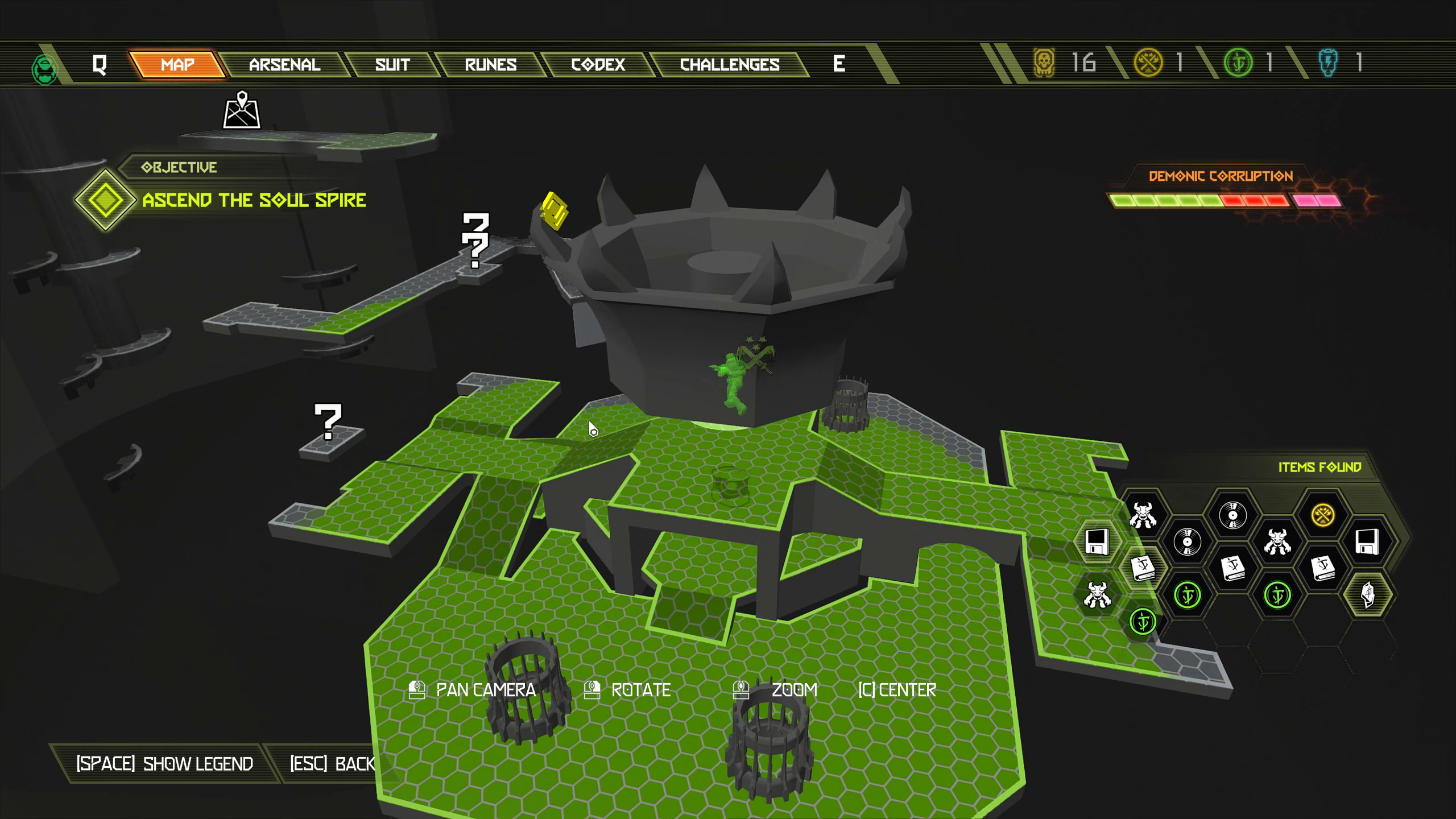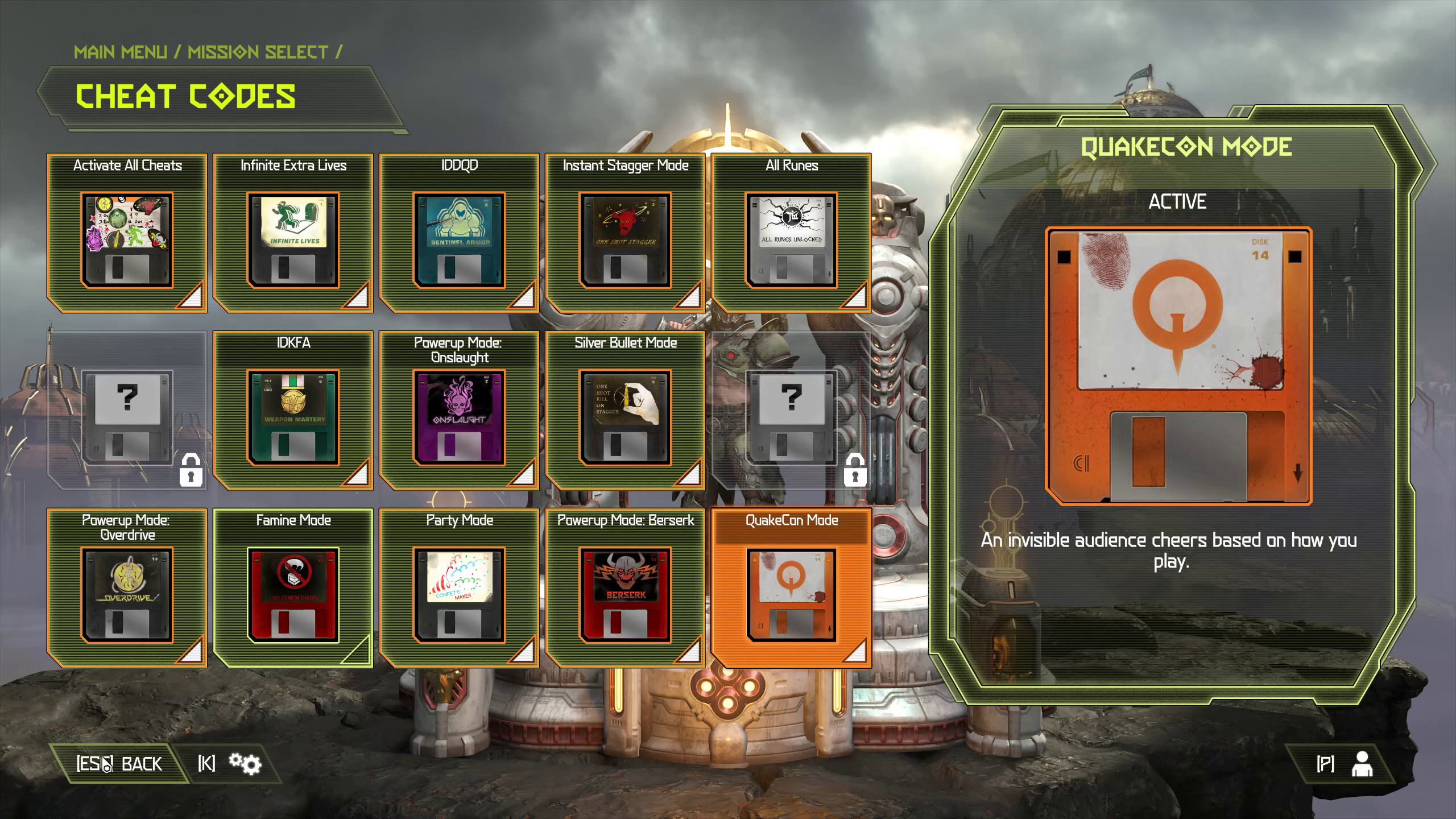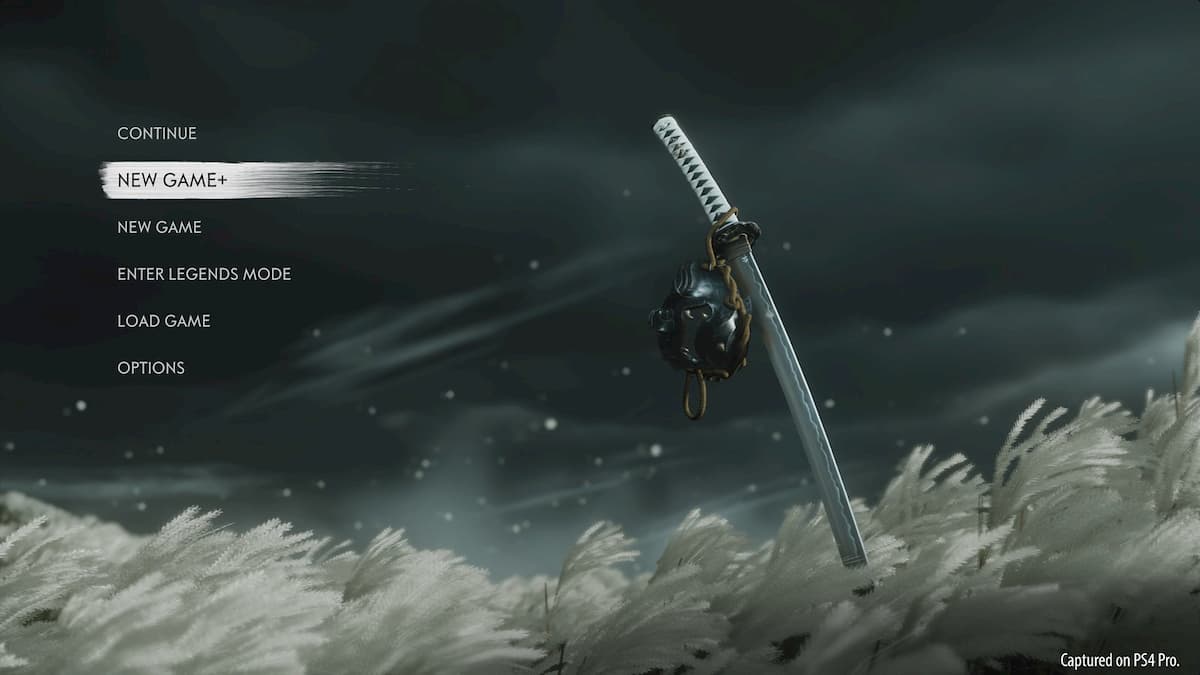
What is it? A shooter obsessed with speed and stress
Reviewed on RTX 2080, i9-9900K, 16 GB RAM
Price $60 / £50
Release date March 20, 2020
Publisher Bethesda Softworks
Developer id Software
Multiplayer Demons vs slayer Battlemode
Link: Official site
I just finished Doom Eternal and I’m feeling anxious and exhausted. I’ve kneed the underside of my desk too many times to count from tensing up. My hands are soft from sweating and my knuckles crack when I try to make a fist. Doom Eternal is a celebration of excess. Excess in sin, in violence, scale, speed, and volume. I’ve never played a shooter this intense and demanding.
Doom Eternal also runs beautifully on a wide range of hardware and feels designed for a mouse and keyboard first. It’s a modern classic, with a few caveats. Cheap deaths from getting stuck on geometry happen too often. There are six or seven layers of unnecessary progression. Doom’s dark humor has mostly been traded in for deep lore and a high-fantasy cosmology. And the strain from a heavy focus on resource management is felt at every difficulty level. I worry that for some, it could be Doom: But Too Much.
But “too much” works for me as Eternal’s guiding light. The moment to moment combat is distilled panic rather than empowerment. I live for the fleeting moments my head gets above water within the hurricane of light and noise and extravagant violence, and I pull off a feat of accuracy and reflex I never thought I was capable of before.
- Doom Eternal unlock time: Find out when you can play in your time zone
Paimon pleasure
Doom Eternal is a tough teacher. A few hours in I’m getting by just fine, juggling half a dozen weapons, belching fire on the hordes to spawn armor to stay afloat, tossing grenades at every opportunity to stun and soften up the crowd. I’m dashing in and out of the action for the occasional Glory Kill to keep my health topped off, dodging projectiles and managing the arena, deciding, between breaths if I remember to breathe, which demons to attack based on who’s currently kicking my ass the most.
Late into the fight a marauder appears. This guy has an axe, a shield, and only opens up to damage if you counter a specific attack with a precisely timed gunshot. Blasting it with a rocket barrage does absolutely nothing. With this enemy design, Doom is asking me to stop shooting and moving so much. It’s playing with the comfort zone I’ve built over decades of playing arena shooters. Now I have to let up on the trigger, to circle-strafe and assume the calm restraint of a Dark Souls duel. I hate this enemy at first, but then I get the hang of it after a dozen or so attempts.
I’ve been playing these shooters since I was a teen. But Eternal isn’t just asking me to get intimate with my keyboard’s number row, it’s challenging me to change playstyles in the middle of a classic Doom arena fight, to stop doing boxing and start doing judo. Managing resources, switching weapons, staying on the move, prioritizing demons based on the arena shape and current threat is plenty to juggle for most people, but Doom Eternal makes you change age-old habits too.
Doom’s guns aren’t as subject to this complexity. The old gang is back again. Hello, combat shotgun. Hello, plasma rifle. Hello, BFG. With more opportunities to refill ammunition and heaps more arenas with ways to get airborne, the previously underutilized ballista gets heavy use as a railgun stand-in and stylish airborne demon deletion tool.
Updated viewmodels reinforce each weapon’s heft and sheen, and the gun skins rewarded for completing certain milestones are weird, but not unwelcome in a singleplayer game. Refined reload and firing animations imbue each with a sense of mechanical realism, especially the alternate firing modes, which have way more utility this time. But the guns haven’t lost the fundamental character they had in Doom 2016. The big changes in Doom Eternal are in how it handles resource management.
Farming armor from the same guy I’m dueling creates a give-and-take with enemies that isn’t present in other shooters.
Glory Kills still reward health for staggering a demon and finishing them with a special melee kill animation, but chainsaw kills, which drop ammo, are far more important for keeping your guns fed. Burning through every bullet takes very little time. Throw in the flame belch, a tool that lights demons on fire to make them puke up armor for a bit, and suddenly half of each fight becomes about juggling resources. I regularly had to dip out of Marauder fights to chase down a stray demon for ammo or health.
Making your enemies your life-saving resources contributes to the overbearing tension of Doom Eternal. Chasing demons into a dangerously tight space normally isn’t a great idea, except when it’s the setup for a quick flame belch followed by a grenade or rocket. Every stray imp is a potential ammo cache, so keeping a few around just in case is a good plan, so long as you’re willing to pay the annoying fireball tax. You have to confront these guys to stay alive, and it’s rarely on your own terms.
It was all overwhelming at first, frustrating second, and then suddenly novel and exciting. Yes, it makes zero sense that you light monsters on fire in order to get them to drop armor shards. But oddities like this feed into an exhausting, anxiety-inducing, thrilling-once-you-get-it vibe, and farming armor from the same guy I’m dueling creates a give-and-take with enemies that isn’t present in other shooters.
These more unfamiliar ideas could do with a bit more onboarding, and Eternal’s current solution of spelling out how to beat every new demon (even bosses!) with on-screen explainers isn’t exactly elegant. Trial and error is essential to Eternal’s learning curve, which wasn’t the greatest way to acclimate myself to the new ideas and systems introduced throughout its 15-hour runtime.
But the ideas settle easier if you’re packing any Extra Lives, literal old-timey 1UPs hidden around each level that keep the momentum going with an instant respawn. I only wish they weren’t automatically spent with death, since I lost plenty from stupid mistakes. A prompt would be nice, because Doom Eternal’s fights get larger, more complex, and more challenging than ever. I died so, so much. Turns out there are still plenty of novel ways to push my pointing and clicking skills.
Zig Zagan
I wanted to spend more time soaking in Eternal’s incredible settings rather than just shooting and dashing my way through them.

Doom Eternal release date: Everything we know
Doom Eternal tips: Weather the steep difficulty curve
Doom Eternal Slayer Keys: Unlock the optional encounters
Doom Eternal Runes: Give Doomguy the edge
Doom Eternal settings: Kill in high-res glory
Doom Eternal computer code: Uncover a special treat
Doom Eternal cheat codes: Escalate the action
Doom Eternal Battlemode: Tips for victory
Also on the pile of new stuff to digest: a lot of progression systems. Weapon points, runes, secrets, sentinel batteries, suit upgrades, challenges, weapon mods, skins, weapon mod upgrades, weapon mastery upgrades—it’s a lot. Too much, really, because Eternal places the bulk of these upgrades along the critical path. By the end I had almost every upgrade and without trying too hard to find them all, as if it’s all an elaborate cardboard front built to make players feel good while ensuring they stay at pace with the steep difficulty curve.
Secrets give a little incentive to stop and dig out extra upgrades and collectibles, but they’re clearly marked on the map, and Doom Eternal’s level design is extremely straightforward. I miss the mazes of old FPS games (or recent homages like Ion Maiden), where finding that last keycard or a hidden door was a big victory. Eternal’s goal is momentum with little room for downtime. The ability to climb certain walls, dash in midair, and swing from monkey bars makes for some challenging navigation sequences, but I wanted to spend more time soaking in Eternal’s incredible settings rather than just shooting and dashing my way through them.

The new forms of mobility do shine in the arena, though, especially with how these fights scale up so quickly. It’s Doom 2016 endgame stuff from pretty early on, and then surpasses that benchmark, adding tougher demons and even more waves and wild configurations of them, and then surpasses that mark again and again. The dash is essential for dodging projectiles, but even more so for map awareness.
Dashing out of the fray and to a decent vantage point wins a split second to see what you’re up against, and any chance to scan the crowd and prioritize a target makes a big difference. Those brief moments of respite allow me to land a nice scoped shot with the chaingun on an arachnotron’s scorpion-tail gun turret to make them less of a threat, or freeze a slithering whiplash demon with an ice bomb so it holds still for a gun hug.
Combat arenas vary from tiny, crowded shotgun gauntlets to huge multilayered jungle gyms. A favorite spans a bubbling river of fire, jump pads on every terrace of the elaborate blistery structures consuming a ruined city. Monkeybars jut out from walls all over that I can swing off of, making it possible to stay in the air for the majority of the fight. I don’t have to touch the ground between gibbing a revenant with the railgun and grappling right up to the dumb grin of a cacodemon with the super shotgun’s new meat hook attachment. My super shotgun’s meat hook sets any demons it lodges into on fire, a cute touch.
I cheated the game and didn’t cheat myself. Doom Eternal is happy for me. Feels great.
The arenas jive with the expanded mobility for a more expressive combat experience than 2016. If I want to do it, I probably can, as if there’s an uninterrupted circuit between my brain, the mouse and keyboard, and the Doomguy. It’s why getting stuck on Doom’s occasionally jagged hell-geometry is such a momentum killer.
It happened right at the end of my eighth or so attempt on an early boss. A strenuous arena fight with two Doom Hunters was almost over—I just needed to finish one off—but a smaller demon spawned in front of me and body-blocked me into a corner. Three seconds of standing still and I was dead. I think Doom Eternal knew something was up, because before I respawned a prompt popped up and asked if I wanted to put on some Sentinel Armor.
It’s a difficulty-bracing system that kicks in after a couple deaths and gives you a buff that decreases damage for specific fights. I took the offer and feel better for it because I probably would have stopped playing for a while otherwise. Between the variable difficulties—I pushed through on Ultra-Violence—and salves like Sentinel Armor and extra lives that help remove friction, Doom Eternal did an excellent job pushing me just beyond my limit without burning me out, despite the occasional unfair death.

Doom Eternal is a challenging game, but it won’t stop you if you’d prefer to take a breezy tour through metal album landscapes and demon guts. Cheats don’t affect progression at all. You can clean up any collectibles (except Slayer Gates, an endgame challenge) and finish the whole thing as an unkillable machine. Just drop Eternal to its easiest difficulty and go cheat hunting. They’re clearly marked on the map along with every other collectible.
My favs: Party Mode and QuakeCon Mode. The former makes demons pop like confetti pinatas and the latter frames the action with a ‘live’ audience that cheers or boos based on how well you’re doing. There’s even a ‘woo’ guy. Paired with the classic center-screen gun perspective and a new option that gives Doomguy and his weapons their classic sounds, I’m having a blast whipping through the levels on a second playthrough, cleaning up collectibles as an immortal demigod in a well earned victory lap after my vanilla Ultra-Violence run. I cheated the game and didn’t cheat myself. Doom Eternal is happy for me. Feels great.
More story Foras
Eternal revisits plenty of old scenery, Hell and Mars included, but also goes to some unexpected locations with distinct architecture and color palettes. Doom 2016 was red and blue. Doom Eternal throws in purple and green and gold and grey. If there was any downtime in Doom Eternal, it was because I stopped between fights to soak in the scale and majesty of its vistas.
Demons as tall as skyscrapers carrying hell barges around on their backs, swarms of dozens of cacodemons like gnats in the distance, ancient sentinel castles climbing mossy mountains into the clouds—Doom is a full on high fantasy world now, pages and pages of optional lore included.
Doom Eternal feels like it was made for the PC first.
Some of the natural humor is dulled as a result, but I still laugh every time I hear the cartoonish pop of a cacodemon’s eye getting ripped from the socket. Besides, Doom taking itself this seriously feels like a joke of its own. I didn’t really care much for the story anyway, even after reading every codex entry. Nothing was lost or gained. It’s thematic dressing, an excuse for wack, outrageous settings and action sequences, BFGs, even B’er FGs, and so on.
Musically, it’s an evolution, not a reinvention. Mick Gordon builds on the Doom 2016 sound with chanting heavy metal choruses and a darker, black metal-adjacent vibe overall. This is still a very familiar energetic Meshuggah-inspired sound that I love, it just didn’t cover as much new ground as I’d hoped. But without Gordon’s signature sound, Doom Eternal would feel empty. The music is integral to the action, an undercurrent of energy to aspire to.
In the new Battlemode it’s possible to duke it out with other players, either as the slayer or a few demons. It’s a multiplayer mode much more aligned with the spirit of Doom, but it wasn’t available to try out during the pre-release period. PCG’s Emma Matthews had a chance to try it in February and thought it matched the heart-rending pace of the singleplayer mode, it just isn’t the main attraction here. We’ll be sure to spend more time with it once the servers go live, but whether Battlemode is great or not doesn’t change how worthwhile Doom Eternal already is. This is a pretty slick computer game, folks.
Doom Eternal feels like it was made for the PC first, too. I had zero hiccups during my 15-hour playthrough. No crashes, no hitching, and I didn’t have to bump a single setting down to get my framerate above 120 fps at 1440p. Granted, I have a juicy rig (RTX 2080, i9-9900K), but I’m still used to playing with post-processing junk to inch my fps higher. Our performance review shows Doom Eternal maxed out and maintaining 60 fps at 1080p on a GTX 1650, a $150 GPU. Doom is seriously an industry standout in this regard.
Arenas are filled with dozens of demons at once, each one like their own bespoke muppet, each detailed and present in how they’re put together and how they fall apart. The gore system breaks them up piece by piece, exposing gristle and bruised muscle and bones underneath. And Doom never skips a beat rendering all the demon bits and weapon effects and wild environments, my mouse whipping around so fast as if to dare it to all gum up. Nah.
Anything less than perfect performance wouldn’t do, because Doom Eternal is one of the most demanding arena shooters I’ve ever played, a game that teases out and hones every muscle memory committed to my right forearm and left hand fingertips since they graced a mouse and keyboard. It’s bright and loud, hyper violent yet tastefully refined, and absolutely draining. I can’t recall playing a shooter where sensory overload was one of the most common reasons for death.
94
Read our review policy
Doom Eternal is a ceaseless, panicked nightmare that pushes you to point and click with more skill and style than ever before.






More Stories
Review: The Last of Us Part II complicates the idea of right and wrong
Dirt 5 review
Mordhau Review – Medieval Times